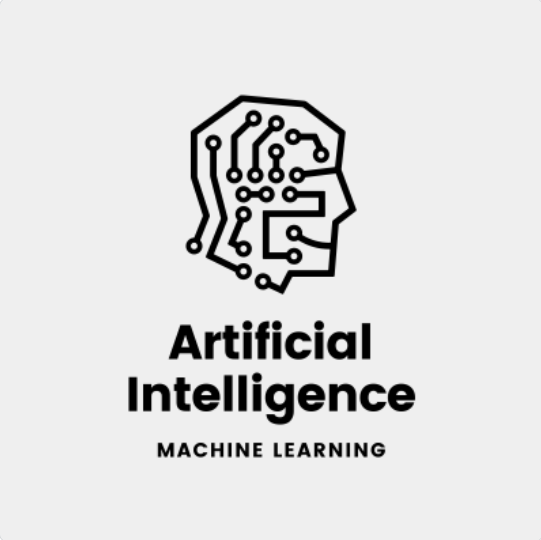AI Implementation & Solutions for Manufacturing
AI Implementation & Solutions for Manufacturing Applications for Quality Control Does your company hire employees to sort products and detect defects? Do your employees perform simple yet detail-oriented tasks? By in...

AI Implementation & Solutions for Manufacturing
Applications for Quality Control
Does your company hire employees to sort products and detect defects? Do your employees perform simple yet detail-oriented tasks? By introducing AI business solutions into your manufacturing company’s processes you could achieve the same and even better results while lowering your production costs.
AI provides practical business solutions for processes like quality control and defect detection. It uses visual inspection technology and computer vision in order to create an algorithm to detect products or product defects.

Problems with Manual Labor & the Benefits of AI Automation
There are potential problems with having humans detect defects. Problems that can be avoided with AI. For example, product components can differ from one another. Thus, defects can be small and difficult to detect with the naked eye, especially from all angles simultaneously when the product is going down an automated assembly line. Not every employee 100% of the time is having a “good” day. Perhaps, someone is tired or has a headache that unfortunately prevents them from keenly spotting defects. Maybe one employee on one shift is more diligent in detection than another employee on another shift, and so on. Not to mention, employees all work at different paces.
Thus, AI can offer solutions to your business problems by consistently performing tasks in the same way. It can consistently detect defects without any variances that usually occur when the same task is completed by humans. By using AI to solve problems, it can reduce the manual work needed for quality control, and instead change the status quo of those employees by giving them more complex, rewarding work at a higher level, and leaving the more tedious tasks for AI to complete. Employees can then oversee the actual defects that are identified by AI.

Quality Control: AI Defect Detection
With the setup of a system composed of cameras, AI can detect defects at all angles simultaneously in real-time. Computers and machines can be taught to:
- learn by example
- extract common patterns and transform them into math equations
- help classify pieces of new information for ongoing future use
- and find anomalies and imitate a visual human inspection of a product
Thus, AI could improve productivity with a bespoke algorithm that through the use of cameras is capable of detecting the smallest defects. Right away, this offers some great benefits. AI can guarantee performance by knowing what errors to look for. It can improve efficiency in defect detection and AI algorithms can be tuned and set to the desired level of sensitivity versus specificity.
- Sensitivity detects ‘positive’ results (i.e. products that pass inspection) based on the settings and parameters programmed as such into the AI algorithm.
- Specificity measures how well the AI algorithm can identify defects. Both can provide statistics of productivity.
Some examples that visual inspection systems can be used for to detect defects are:
- automotive parts
- electronic parts
- building materials
- raw material manufacturing
- food processing
- medical (medicine & equipment)
- and many others!
Quality Control: What are the first steps to integrate an AI inspection system?
1. Know your problem
What kind of defects should the AI system detect? What is the work environment? Should the defects be caught real time or should a deferred detection approach occur?
2. Collect & Organize Data
Before signing on with an AI company to assist you with your AI needs, be sure to collect data first. Data, in this case, could be video recordings of the task or process you wish to evolve with AI technology. After the data is collected, it must be ‘prepared’ for modeling. The data needs to be organized, structured, and relevant for defect detection usage by AI. Data collection and organization is the most important part of building any AI algorithm.
3. Develop a Deep Learning Model
Maybe this last step seems a bit forward thinking for the place your company might be at right now, but ask yourselves: Which approach makes sense for your business to detect defects? Which model are you hoping to imitate, replicate, or create for your business needs? Here are two examples of learning models:
- Templates (for simplistic tasks)
Why use an AI template as an option for your company’s machine learning tasks? Templates are available to save time and budget. However, it is important to know that most templates are not customizable. On the other hand, the benefit to using a template model is that it is not necessary to build a model from scratch. You don’t need to reinvent the wheel. Templates are easy to use as a ‘grab-and-go’ for generic, simplistic tasks. Keep in mind, that means these are ready-made for many businesses. It may save time, costs, and improve efficiencies, but it gives you no competitive advantage over other businesses in your sector.
- Deep Learning Models
Why should your company explore AI deep learning models? Deep learning models can complete complicated tasks by using more customizable, intricately designed AI algorithms. Tasks that focus on visual inspection systems to detect defects, for example. Things your company may want to give some thought to are the different types of defects you wish to identify within a given task, such as lighting conditions of your business environment (Does the building have natural lighting? Are there windows, or is the work completed in a dark room, an old warehouse, or a basement?), resolution quality of images, and the number of products that will be inspected per hour or per day (Will the visual inspection system be detecting hundreds or thousands of products at a time and in how short of a time frame?).
Conclusion
Many small and medium-sized companies are not aware of options and opportunities to implement and use AI algorithms to help their manufacturing businesses. Sparkd AI offers AI algorithms that assist with machine learning, are consistently efficient through automation, and save time and costs by completing simple and complex tasks, such as defect detection. By using AI solutions to complete trivial tasks, this allows your employees to focus on more complex tasks.
In closing, there are easy and efficient ways to implement machine learning as part of your business solution, including ways to reduce manual work. Let AI change the status quo of your manufacturing business.
Start your AI Journey Today
Subscribe to Newsletter
Author: Samantha Sink
Photo by Paul Einerhand on Unsplash



